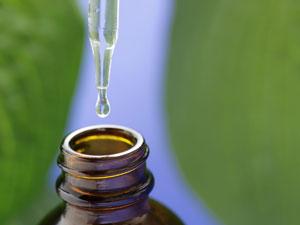Learn More about Boron
Boron is a complex found in nature, used in flame retardants, leather industry, cosmetics, photographic materials, soap cleaners, high energy fuels. Boron will enter the environment through natural sources and industries that use boron. Edible food exposed to boron are mainly vegetables and fruits. Working in manufacturing sites, using boron-containing cosmetics and laundry products may be exposed to boron.
Boron dust can cause irritation to the nose, throat and eyes. Animal experiments indicate that ingestion of large amounts of boron can affect male reproductive organs, especially testicles.
Boron is not listed as a human carcinogen. Animal experiments have found that exposure to boron during pregnancy can result in offspring with low birth weight, birth defects and slow growth.
Blood and urine can detect if excessive boron has been exposed. The US Environmental Protection Agency (US EPA) has set a boron exposure of 4 mg/L in drinking water for one day. The Occupational Safety and Health Administration (OSHA) has restricted the average exposure of workers daily. Working exposure for 15 hours of work time is 15 mg/m3
The focus of this article
[Bron, CAS # 7440-42-8], Boron exposure occurs in the work environment or in certain consumer products. Inhalation of moderate concentrations of boron can cause irritation to the throat, eyes and nose. Ingestion of large amounts of boron can cause damage to the stomach, small intestine, liver, kidneys and brain.
1. What is Boron?
Boron is a complex that exists in nature. Boron is often found to bind to other substances, such as the formation of borate. Common Boron compounds include boric acid, borate, and boron oxide.
borate is often used to make glass. They are also used in flame retardants, leather industry, cosmetics, photographic materials, soap cleaners, high energy fuels. Some pesticides are used in the control of cockroaches as well as some wood preservatives including borate
2. How does Boron change into the environment?
Boron enters the environment via natural sources such as oceans, volcanoes, and geothermal steam.
Boron is also released into the environment via the industry using Boron.
Boron is not broken down in the natural environment. Spread by combining with particles of soil, sediment or water to form a compound.
3. Under what circumstances will I be exposed to Boron?
You may be exposed to Boron because of food, mainly vegetables and fruits.
Boron is widely distributed in surface water and groundwater
The general public is unlikely to be exposed to Boron because of the presence of Boron in the air.
If you work in a Boron mining, refinery, and Boron manufacturing facility, Boron exposure will occur.
If you use boron-containing consumer products, such as cosmetics and laundry products, there may be exposure to boron.
4. What effect does Boron have on my health?
People who work in the dusty areas of Boron mining or where borate is made can cause irritation to the nose, throat and eyes. After leaving these dusty places, these stimuli will not exist for too long.
Exposure to large amounts of Boron (about 30 grams of boric acid) can affect the stomach, small intestine, liver, kidneys, and brain for a short period of time, and can even cause death.
Animal experiments have pointed out that a large amount of Boron in a short time or a long time will affect the male reproductive organs, especially the testicles. The dose that causes health hazards in animal experiments is more than 1800 times the average daily intake of boron in Americans in food.
5. How likely is Boron to cause cancer?
The Department of Health and Human Services (DHHS), the International Agency for Research on Cancer (IARC), and the US Environmental Protection Agency (U.S. EPA) did not list Boron as a human carcinogen. In an animal experiment, no evidence of carcinogenesis was found in foods that were exposed to boric acid for life. Nor has human research found to be carcinogenic.
6. What effect does Boron have on children's health?
It is very likely that children will find the same health effects as adults. We don't know if children are more tolerant to Boron than adults.
It is not known whether Boron has caused human birth defects. After giving high doses of boric acid to pregnant animals, they produce offspring with low birth weight, birth defects, and growth retardation. The dose that produces these effects in maternal animals is 800 times the average daily intake of Boron in American adult women.
7. How to reduce the risk of exposure to Boron at home?
Insecticides containing boron compounds should be used according to the instructions for use and away from children.
Always keep household chemicals in the original labeled container and keep away from young children to avoid accidental poisoning. Never store household chemicals in containers that attract children to eat or drink, like soda bottles.
Children living near waste containing Boron and boron compounds may be exposed to boron above normal environmental concentrations by breathing boron-containing dust, touching boron-containing land, and eating land contaminated with Boron. Children should be encouraged to wash their hands often, especially before eating food.
8. Is there any medical test that allows me to know that I have been exposed to Boron?
Blood and urine can detect if excessive Boron has been exposed. These tests can indicate that you have been exposed to boron but cannot predict what health effects will be caused.
9. Domestic and foreign regulations
The US Environmental Protection Agency (US EPA) has set a Boron exposure of 4 mg/L in drinking water for one day and 0.9 mg/L for boron in 10 days of drinking water. Such exposure will not cause any discomfort to children. reaction. The US Environmental Protection Agency (U.S. EPA) has set a lifetime exposure to boron at 1 mg/L without causing any uncomfortable reactions.
The Occupational Safety and Health Administration (OSHA) has restricted the average exposure of workers to eight hours of work per day or 40 hours per week of work exposure of 15 mg/m3.
Related News
 October 25, 2018The boiling point of sodium nitrate is the temperature at which the saturated vapor pressure of the product is equal to the external pressure. Therefore, the more knowledge we know about the product, ...view
October 25, 2018The boiling point of sodium nitrate is the temperature at which the saturated vapor pressure of the product is equal to the external pressure. Therefore, the more knowledge we know about the product, ...view August 9, 2018Boron oxide (B2O3), Formula Weight is 69.63.B2O3 can reduce the coefficient of expansion of glass, provide thermal stability and chemical stability of glass, increase the refractive index of glass, im...view
August 9, 2018Boron oxide (B2O3), Formula Weight is 69.63.B2O3 can reduce the coefficient of expansion of glass, provide thermal stability and chemical stability of glass, increase the refractive index of glass, im...view May 29, 2019Excessive use of boric acid products cause human body boric acid or borate salt intake can lead to poisoning, boric acid salt for the skin, usually a wound or oral, or after long-term exposure can cau...view
May 29, 2019Excessive use of boric acid products cause human body boric acid or borate salt intake can lead to poisoning, boric acid salt for the skin, usually a wound or oral, or after long-term exposure can cau...view

 Electronic Grade Anhydrous Boric Acid
Boron oxide powder with the purity 99% MIN and 60-200 mesh mainly used in the chemical lab as reagents and electronic industry. View More
Electronic Grade Anhydrous Boric Acid
Boron oxide powder with the purity 99% MIN and 60-200 mesh mainly used in the chemical lab as reagents and electronic industry. View More Premium Grade Boron Oxide CAS NO 1303-86-2
Boric oxide powder with the purity 98.8%MIN and 60-200 mesh mainly used in the glass, ceramics, refractory raw materials, catalysts for chemical processing and chemical agent. View More
Premium Grade Boron Oxide CAS NO 1303-86-2
Boric oxide powder with the purity 98.8%MIN and 60-200 mesh mainly used in the glass, ceramics, refractory raw materials, catalysts for chemical processing and chemical agent. View More Industry Grade Anhydrous Boric Acid Einecs NO 215-125-8
Boron trioxide powder with the purity 98%MIN and 60-200mesh mainly used in alloy steel industry. View More
Industry Grade Anhydrous Boric Acid Einecs NO 215-125-8
Boron trioxide powder with the purity 98%MIN and 60-200mesh mainly used in alloy steel industry. View More Boric Acid
Boric acid used in the quality borosilicate glassmaking and optical glassmaking, glaze for metal surface in porcelain enamel industry and seves as flus in alloy welding. View More
Boric Acid
Boric acid used in the quality borosilicate glassmaking and optical glassmaking, glaze for metal surface in porcelain enamel industry and seves as flus in alloy welding. View More English
English  中文
中文  한국어
한국어  Español
Español 








 +86-29-88238008 / 88238009
+86-29-88238008 / 88238009 
 1703# B Building West Electronic Zone New and High-Tech Industrial Development Zone, Yanta District, Xi'an, China.
1703# B Building West Electronic Zone New and High-Tech Industrial Development Zone, Yanta District, Xi'an, China.  +86-29-88238008 / 88238009
+86-29-88238008 / 88238009 
 1703# B Building West Electronic Zone New and High-Tech Industrial Development Zone, Yanta District, Xi'an, China.
1703# B Building West Electronic Zone New and High-Tech Industrial Development Zone, Yanta District, Xi'an, China.